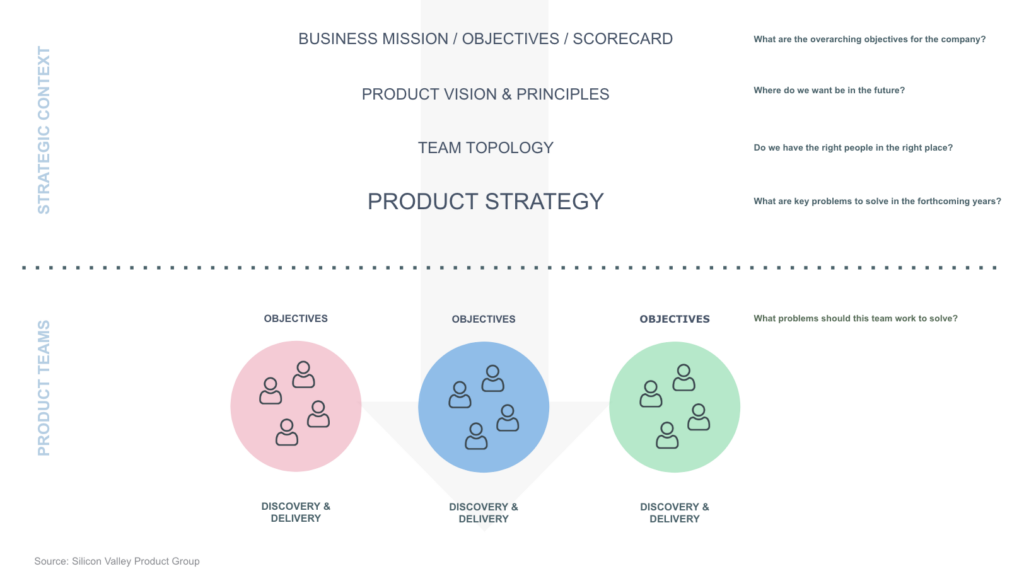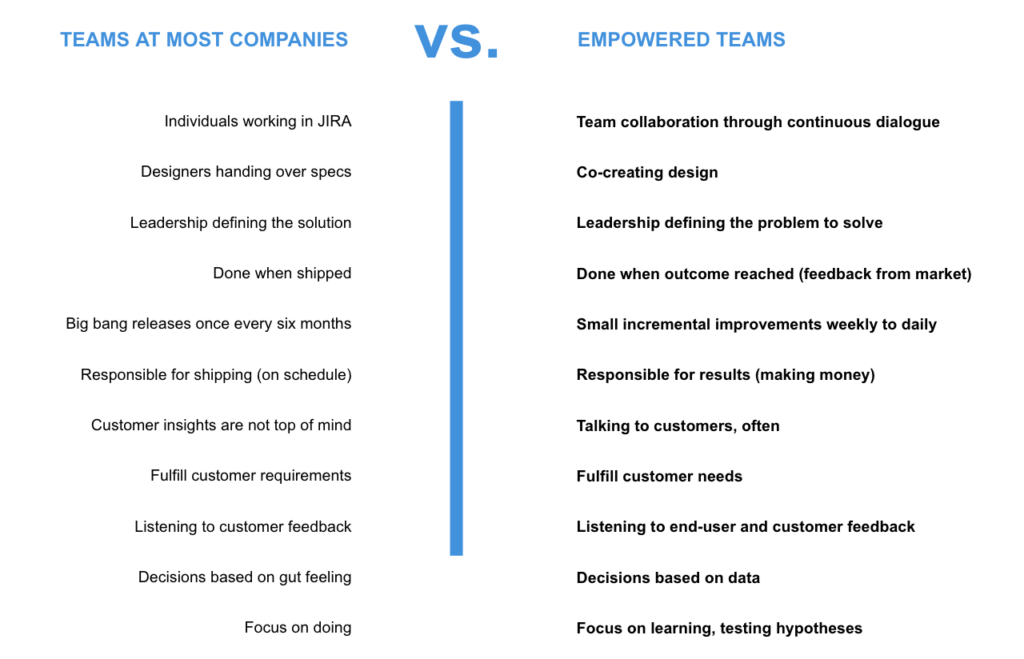This program’s aim is to help organizations make that transformation.
Many business leaders worldwide have read the seminal book “Empowered – Ordinary People, Extraordinary Products” by Marty Cagan and Chris Jones. The contents have inspired companies to shift their perception of how to govern product development, from an “IT-centric” to a customer-centric and goal-oriented one. This requires a radical switch in mindset for teams to change from “doing” to being responsible for results.
The key message is to empower teams and individuals to solve problems rather than provide them with solutions to build. The primary technique is for leaders to spend way more time coaching and nurturing a culture of experimentation.

This program is set up to help product and technology organizations in their quest to be more Empowered. The focus of the program is on the “how”, not the “why” and the techniques and tactics that teams can use to pay more attention to “Discovery” rather than constantly being in a Delivery mode, ultimately making them accountable for results.
The fundamental aspects that the program addresses are the necessary shifts needed to transform (source):

The program is 20% theory and 80% practice of techniques.
“Very Collaborative format – loved learning from others”
“You both covered so much material and did an excellent job of using the MIRO board and breakout groups. I don’t know how you could do much better.”